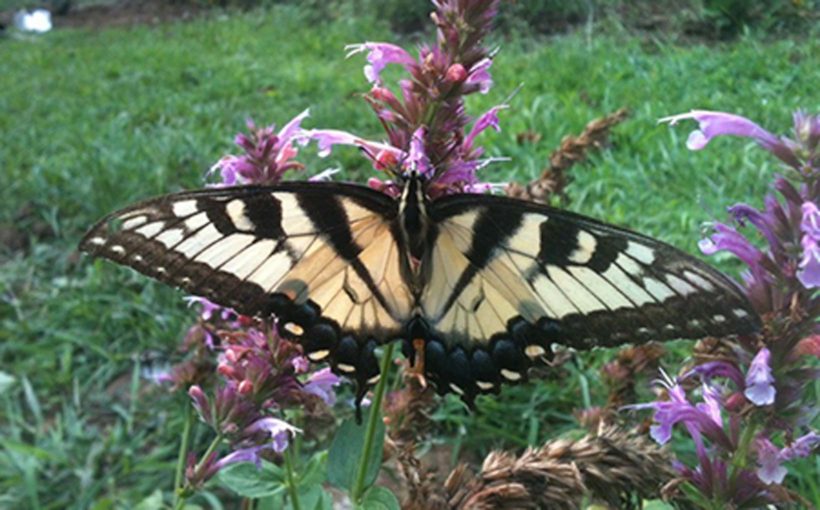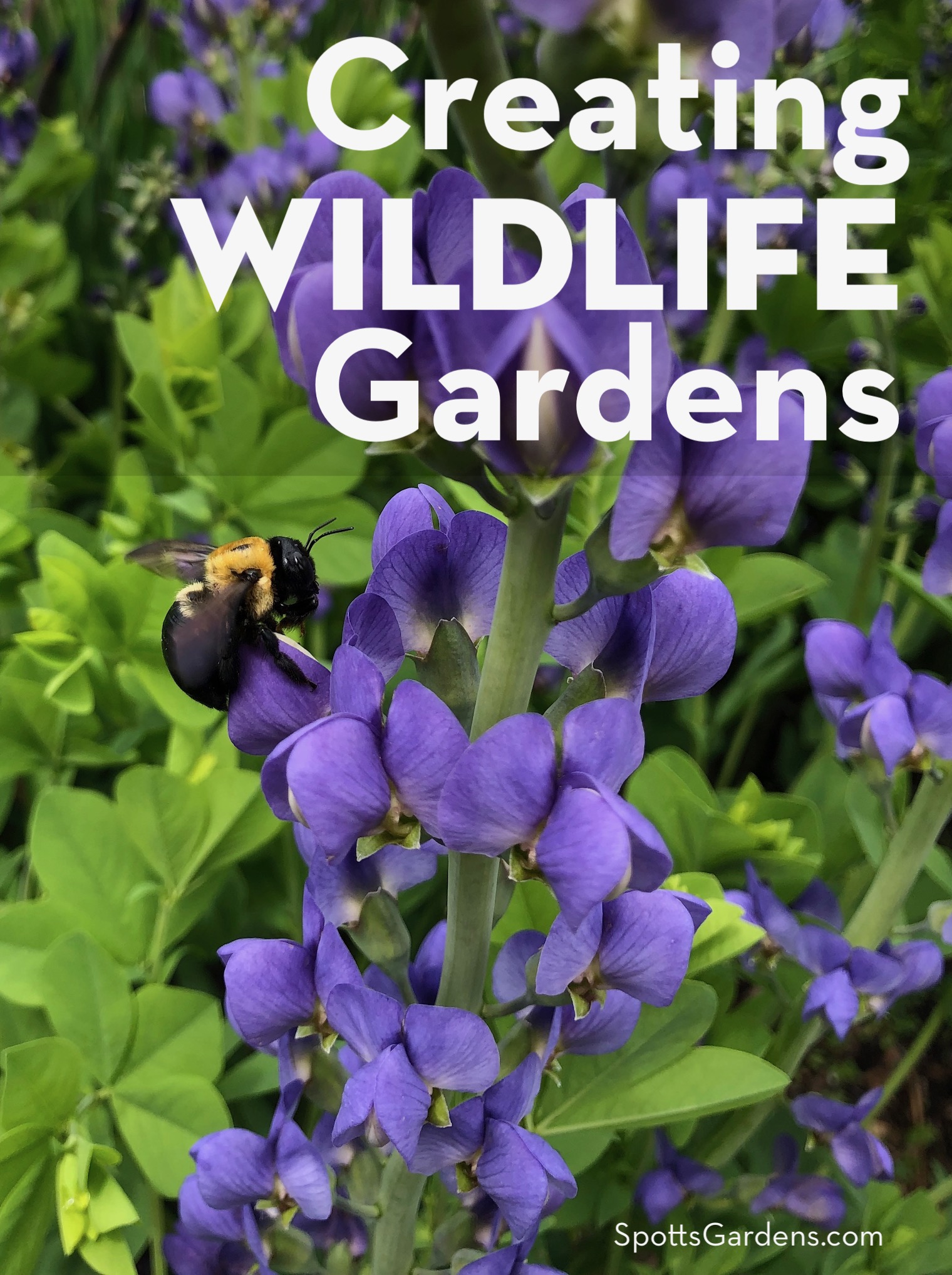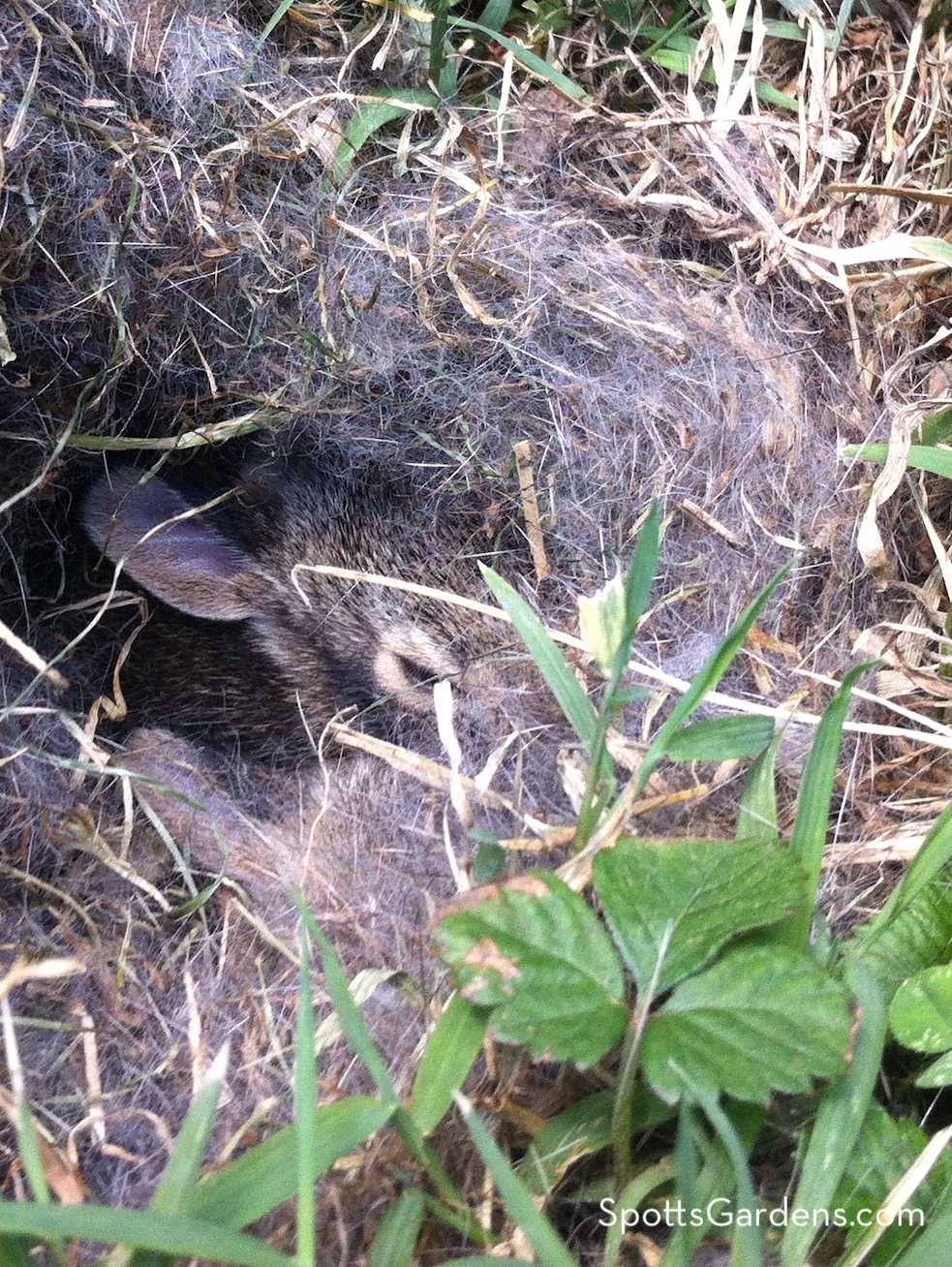Every garden benefits from wildlife! Whether it’s bees in the borders, butterflies flitting among the blooms, or birds nesting in the trees, a healthy garden incorporates all parts of the web of life—from bacteria to fungus to animals.
As we continue to lose wide swathes of habitat, gardens can be a life raft for such wildlife as bees, butterflies, birds, and amphibians. While any well-designed garden can—and should—attract insects and birds, you can ensure your garden is particularly welcoming to wildlife by creating a Certified Wildlife Habitat. Any garden can qualify for certification from the National Wildlife Federation, as long as it meets these five criteria.
Commit to sustainable practices.
Your garden should be managed using practices from at least two of these three sustainability categories. At Spotts Garden Service, we regularly use these techniques in all our gardens.
Soil and Water Conservation
Manage soil and water with such techniques as rainscaping and rain gardens, riparian buffers, and harvesting of rain water. Limiting the use of water in the garden with smart watering techniques, mulch, and drip hoses can help reduce your water bill and ensure water goes exactly where it needs to.
Control Exotic Species
Invasive species are a big threat to wildlife, taking over large areas and outcompeting our natives. Patrol your garden to remove aggressive and invasive non-native plants. Integrate native plants wherever possible. Reduce areas devoted to monoculture lawn areas. And control pests in the garden with Integrated Pest Management, using the least aggressive treatment likely to be effective.
Organic Practices
Choose organic gardening practices, including eschewing synthetic fertilizers and pesticides. Instead, build soil using compost and control weeds with manual weeding, mulching, and other organic techniques.
Provide three different kinds of food sources.
The more diverse the food sources in your garden, the better!
- Plant flowering plants that provide nectar and pollen. Check out our blog Plant for Pollinators for more.
- Select a mix of shrubs and trees to provide berries, fruits, and nuts, as well as foliage and twigs, as food for a wide variety of animals. Feeding Birds in the Winter Garden covers some great choices.
- Choose grasses and flowering plants like coneflower and black-eyed Susan to provide seeds.
Remember that native plants support more insects than non-natives, which in turn support more of the animals that eat insects. Check out some of our favorite natives here. The National Wildlife Federation and the Xerces Society for Invertebrate Conservation have native planting lists too.
Supplemental feeders can round out your garden. But wherever possible, plan for plants to be the main source for food.
Include at least one source of water.
Wildlife habitats require at least one source of clean water for drinking and bathing. Natural features like ponds, streams, springs, and vernal pools can provide this source. If you don’t have a natural feature, use a human-made one like a birdbath or fountain. A rain garden counts too!
Create at least two sources of cover.
Wildlife needs places to shelter from weather, predators, and humans. Most any form of dense growth will work, from stands of grasses to meadows to clusters of dense shrubs. Evergreens, shrub thickets, and bramble patches also provide cover.
Leave dead trees and stumps in place. Rock walls, log piles, and brush piles also make for good cover. You can supplement these spots with birdhouses, insect hotels, and other human-made structures.
Provide at least two places for animals to court and raise young.
To ensure future generations of wildlife, create spaces where animals can court, mate, and raise young. They can include nesting sites, meadows, mature trees, or even dense shrubs.
Many of the spots that provide cover or food can double as these spaces, especially thick plantings of fruiting shrubs, grasses, and meadows. Be sure to include host plants for caterpillars to encourage butterflies to stick around.
Nest boxes can also supplement these natural spots.
Wildlife Friendly by Design
The gardening strategies that Spotts Garden Service uses means that nearly all of our gardens meet the criteria for Wildlife Habitat Certification.
- Keeping plants blooming all season ensures color for the gardener and nectar and pollen for insects. We aim to have three plants blooming at all times from early spring to late fall.
- Native shrubs and ornamental grasses provide movement and structure to the garden while offering the benefit of food and hiding places for birds and other animals.
- Smart soil management maximizes the populations of microorganisms upon which plants rely, as well as creating spots for ground-nesting birds and insects.
- Our commitment to organic practices, water conservation, and the use of native plants all contribute to sustainable, beautiful gardens that provide havens to humans and animals alike.
If you’d like help creating a certified wildlife habitat, contact us at 317-356-8808 or email us at info@spottsgardens.com.


